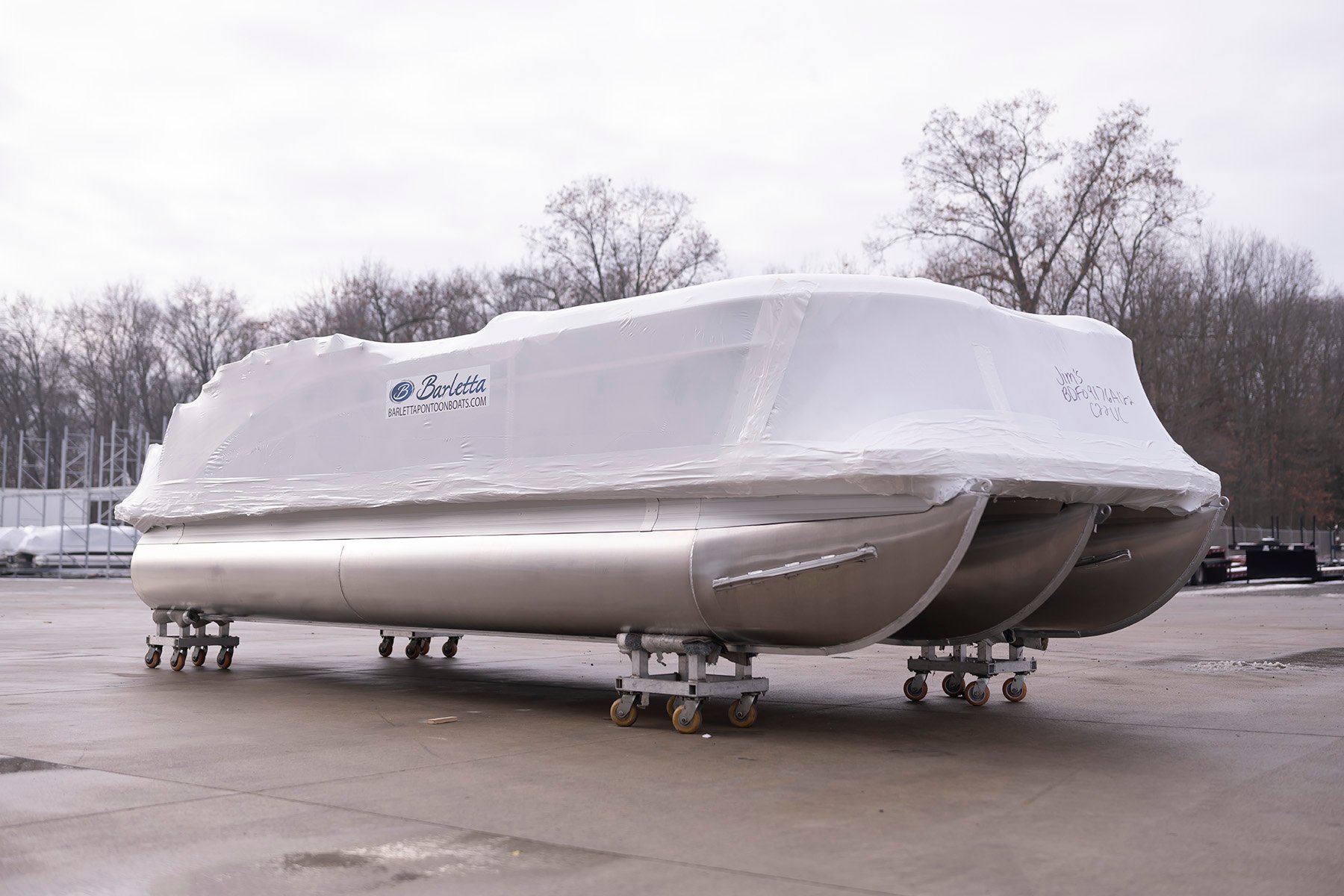The Boater’s Guide to Winter: What to do While You Wait
As a boater, the last thing you want to think about is winter. Now there are those lucky captains that live in a part of the country that stays warm year-round. Regardless of where you boat, there are likely to be chilly months when the boat is not in use.
I have been a boater my entire life and I still get a pit in my stomach when the leaves start to change and the conversation turns to winterization and storage. Boat season in Indiana is about five months long, if we’re lucky.
The rest of the year, the lake community where I boat hunkers down for a harsh winter and counts down the minutes until spring. If this sounds familiar or you’re headed into your first winter as a boat owner, I’ve got some advice on how to utilize this time to prepare for the upcoming boat season.
Winterization
The end of each boating season starts with winterization. If you have owned a boat for a while, you know how this goes and probably have a routine of your own. If you’re new to boat life, it’s important to start this process before you pull the boat out of the water.
To winterize a boat simply means to prepare it for the winter months. The most important component to winterize is the engine as freezing water left behind can crack the engine block and wreak havoc on the internal systems.
Many boaters who are mechanically inclined may handle the entire winterization process themselves. Depending on the type of boat you have, this process will vary in difficulty. As a pontoon owner, I use six easy steps to winterize my boat.
Prepare for Winter
As I mentioned, this process starts before the boat is pulled. I begin by lining up the storage facility I'll be using over the winter months. Once that’s in place, we pull the pontoon boat out of the water and clean it up.
It’s imperative to the health of the boat to make sure the interior is clear of damp items such as life jackets or towels left behind. It’s also crucial to clean out any trash or food items left behind such as crumbs or empty containers.
Doing so will be the first step in keeping unwanted pests out of the boat while it sits in storage. Once the boat is cleaned out, I like to keep all the seats open and let them air out so that any water that may be trapped inside will dry up. This will help prevent mold from setting in while the boat is in storage.
It’s also important to clean the outside of the boat as you don’t want marine growth and buildup to sit on the hull while in storage. The longer it sits, the more stuck on it becomes and the harder it is to clean off come spring.
Pulling the boat out, having it winterized, and preparing it for storage may be all you need to do. However, the off-season is the perfect time to prepare the boat for spring as well. Before it goes into storage, consider any upgrades or maintenance it may need.
Step by step guide on how to pull a pontoon out of the water.
Maintenance
To keep your boat running like a top, you should consider regular maintenance. Don’t just wait for something to break or a light to go off on the dashboard. For example, many boaters don’t realize that the expected lifespan of a boat battery is five years.
Will it run past that amount of time? Possibly, but why take the chance of being dead in the water suddenly because you ignored battery maintenance? It’s also important to know what to do with your battery or set of batteries while the boat is in storage.
Whether the batteries stay inside the boat or you disconnect and remove them, it’s very important to store the battery with a full charge. A low battery can freeze and become damaged in the cold. The best way to store batteries is in a heated area while connected to a Battery Tender which charges them with low and slow amperage randomly to keep them healthy for the next year.
This is also the time to have any type of repairs or additional maintenance done on the boat. Typical maintenance such as oil changes should be performed around every 100 hours. Once the boat creeps into the 300-plus hour range, you will want to have more items checked such as the water pump impeller, spark plugs, and others.
Exterior Maintenance
Keeping your boat running well is beneficial for obvious reasons. But what about the exterior of the boat? Use this time out of the water to prepare and protect the hull from future corrosion and marine growth buildup.
For instance, as a pontoon boat owner, I would use the off-season to have Metal Jacket toon protectant reapplied if needed. If you own a fiberglass boat, this is a good time to clean and wax the boat before next season.
Another form of hull protection that is used more in saltwater areas is bottom paint. The off-season is a great time to have this applied or touched up if this is the route you are taking. Take this time to address any flaws that you want to be corrected as well such as chips in the paint, scratches, or damaged decals.
Add-Ons and Upgrades
Along with maintenance and repairs, the off-season is a good time to have any upgrades or additional features done on your boat. If you’re looking to add a fish finder to the boat or maybe a new lighting package, do this while the boat is out of the water and not in use.
Many times upgrades and aftermarket add-ons take time, so have these items taken care of before the boat heads into storage. This will ensure that your boat is finished and ready once spring comes back around.
The Time to Buy
If the upgrade you seek is a new boat altogether, the off-season is the time to buy. During the winter months, boat shows are scheduled all across the country. Most dealers will attend these shows and you’re likely to find one in your area.
Once you find a show in your area that you would like to attend, do some research. Find out what your local dealers carry, if they’ll be in attendance, and what brands they’ll have on display. Put together a list of questions and use this checklist for an easy shopping experience.
If attending a boat show is not for you, use this time to comb the internet and learn about the brands and types of boats you’re interested in. With time on your side, you’ve got months to shop for a boat and place an order with your local dealer.
Don’t let too many months pass you by, however, lead times will vary if you place an order for a new boat. You should be expecting months between order and delivery, so staying in communication with the dealer on what that timeline potentially looks like is important.
Shopping for a boat in the off-season can have many benefits such as sale pricing, the ability to shop multiple brands at once via a show, and having time on your side as you’ve got months to prepare before summer.
Winter is Coming to a Close
Once you’ve gone through all of the steps to winterize your boat, have all maintenance and upgrades done, and it’s nestled away in storage, the countdown is on. It’s never too early to start preparing for the boating season ahead.
This is a good time to seek out dock rentals for next summer, make repairs or upgrades to your existing pier or boat house, or invest in new equipment such as a boat trailer and boating accessories. You might also start researching the best ways to prep your boat come spring.
Start thinking through what your boat will need coming out of storage. Preparing to summarize the boat can vary depending on the type of vessel you own. This is also where having a relationship with your dealer will pay off.
Start the discussion with them well before the temps start to warm up, this way they’re prepared to do their part in preparing your boat for summer. Depending on how involved your dealer is with the winterization of your boat, they may take care of this entire process for you.
Spring prep checklist to get your boat ready for the season.
Stay Busy in the Off-Season
As a boater, I always take advantage of the off-season. Having maintenance done when the boat is out of the water already makes it so that I’m not missing out on any time on the water during boat season.
This also takes a load off of my dealer’s service center during their busiest time of the year which is spring and summer. Be the best partner you can be to your dealer and they’ll always take care of you even when the schedule gets tight.
Just because you can’t be on the water during the winter months doesn’t mean your boat should be an afterthought. Use this time to prepare for the next boat season and you’ll be ahead of the game.



